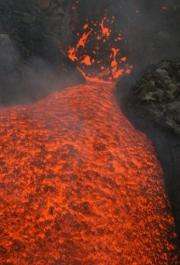Undersea volcano threatens southern Italy: report

Europe's largest undersea volcano could disintegrate and unleash a tsunami that would engulf southern Italy "at any time", a prominent vulcanologist warned in an interview published Monday.
The Marsili volcano, which is bursting with magma, has "fragile walls" that could collapse, Enzo Boschi told the leading daily Corriere della Sera.
"It could even happen tomorrow," said Boschi, president of the National Institute of Geophysics and Volcanology (INGV).
"Our latest research shows that the volcano is not structurally solid, its walls are fragile, the magma chamber is of sizeable dimensions," he said. "All that tells us that the volcano is active and could begin erupting at any time."
The event would result in "a strong tsunami that could strike the coasts of Campania, Calabria and Sicily," Boschi said.
The undersea Marsili, 3,000 meters (9,800 feet) tall and located some 150 kilometres (90 miles) southwest of Naples, has not erupted since the start of recorded history.
It is 70 kilometres long and 30 kilometres wide, and its crater is some 450 metres below the surface of the Tyrrhenian Sea.
"A rupture of the walls would let loose millions of cubic metres of material capable of generating a very powerful wave," Boschi said.
"While the indications that have been collected are precise, it is impossible to make predictions. The risk is real but hard to evaluate."
(c) 2010 AFP

















